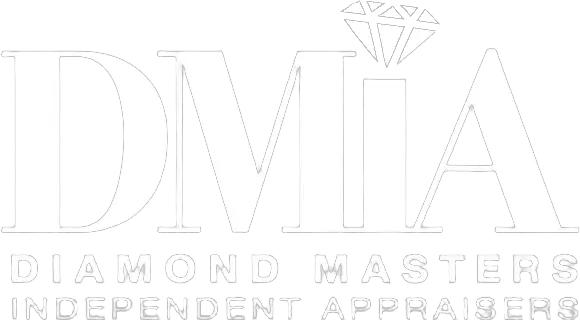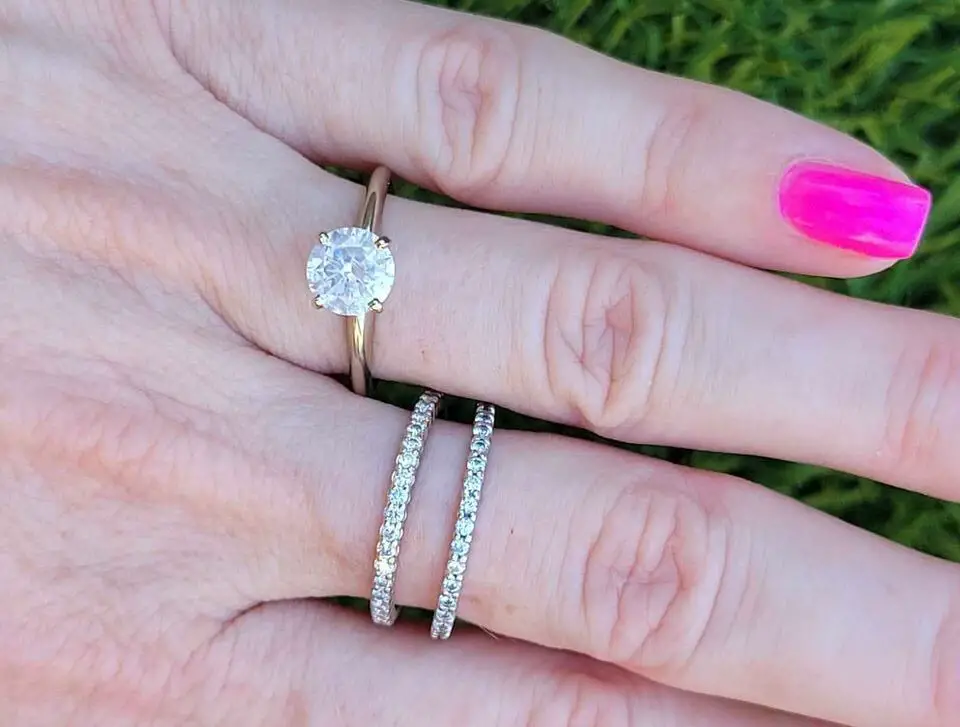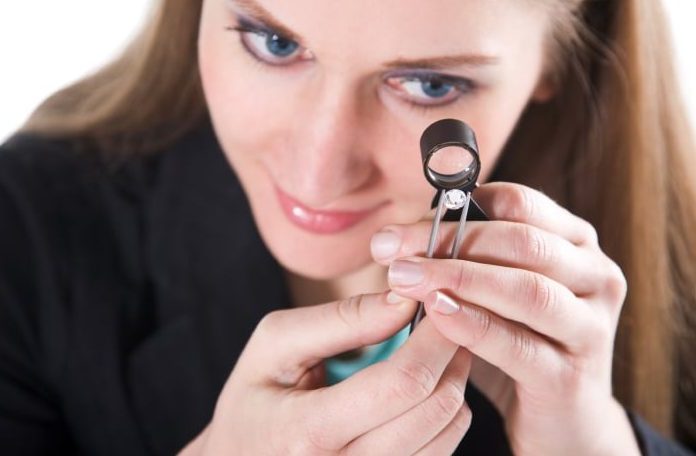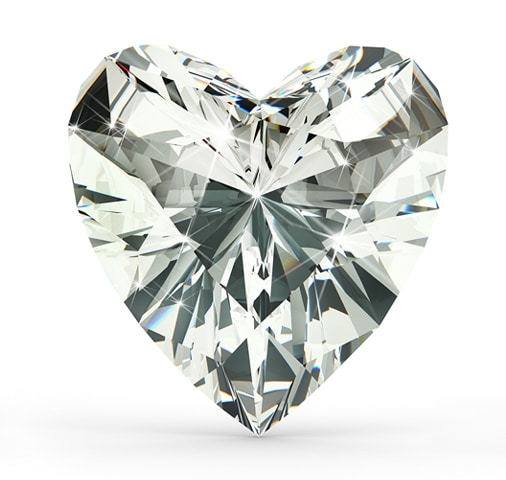How Big is a 1 Carat Diamond? Ring Size Chart, Diameter, Carats Weight
The carat weight of a diamond is one of the 4Cs that determines its value and appeal. But if you’re wondering, “how big is a 1 carat diamond?”, the answer is not as straightforward as you may think.
While 1 carat diamonds sound impressively large, their actual visual size can vary quite a bit depending on factors like cut quality and shape.
As a jewelry consultant with over 20 years of experience, I’m often asked by customers how the size of a 1 carat diamond compares to smaller or larger diamonds. The goal of this guide is to give you a clear understanding of what to expect with a 1 carat diamond, including its typical dimensions, how it looks visually, and what impacts its apparent size.
What is a Carat and How is it Measured?
First, let’s define exactly what a “carat” refers to. A carat is a unit of measurement used to weigh diamonds and other gemstones. One carat is defined as exactly 200 milligrams.
So a 1 carat diamond should weigh about 200 milligrams. But in reality, many diamonds weigh slightly above or below 1 carat. Diamond weight is measured to the hundredth decimal place, and a 1 carat diamond may weigh anywhere from 0.95 to 1.01 carats and still be considered 1 carat.

As a jewelry consultant, I always recommend looking at the diamond’s actual weight on its grading certificate, rather than just the rounded “1 carat” weight listed by jewelers. A 1.01 carat diamond weighs slightly more than a 0.95 carat diamond and will face up a little larger, an important consideration for customers who highly value size.
Typical Dimensions for a 1 Carat Round Diamond
The most popular diamond shape by far is the round brilliant cut. If you’re trying to visualize the size of a 1 carat round diamond, here are the typical dimensions:
- Diameter: Approximately 6.5mm
- Table: 54% – 57% of diameter
- Depth: 59% – 62.5% of diameter
So if you’re looking at round diamonds in jewelry stores, a 1 carat diamond will be around 6.5mm across, or about 1/4 of an inch. The table, which refers to the flat facet on the top of the diamond, will take up more than half of the diameter. And the depth, measuring the height from the culet on the bottom to the table on top, will be around 60% of the width.

To help visualize the size, a 6.5mm round solitaire diamond looks similar in diameter to a U.S. dime. However, it has much more sparkle and brilliance!
How Size Varies By Diamond Shape
While we used the measurements for a round diamond in our example, many people prefer the look of fancy shaped diamonds like princess, oval, emerald, and others. The dimensions will vary based on the particular shape:
- Princess cut: Approximately 5.2 x 5.2mm square
- Emerald cut: Approximately 6.3 x 4.1mm rectangular
- Oval: Approximately 6.5 x 5.0mm oval
- Pear: Approximately 7.0 x 5.0mm tear-drop
- Cushion: Approximately 6.0 x 6.0mm square
- Marquise: Approximately 10 x 5mm ellipse
To understand how a 1 carat diamond looks for each shape, I recommend looking at diamonds in person. Pictures and dimensions can provide estimates, but seeing the actual diamond shapes and sizes in jewelry will give you the best sense.
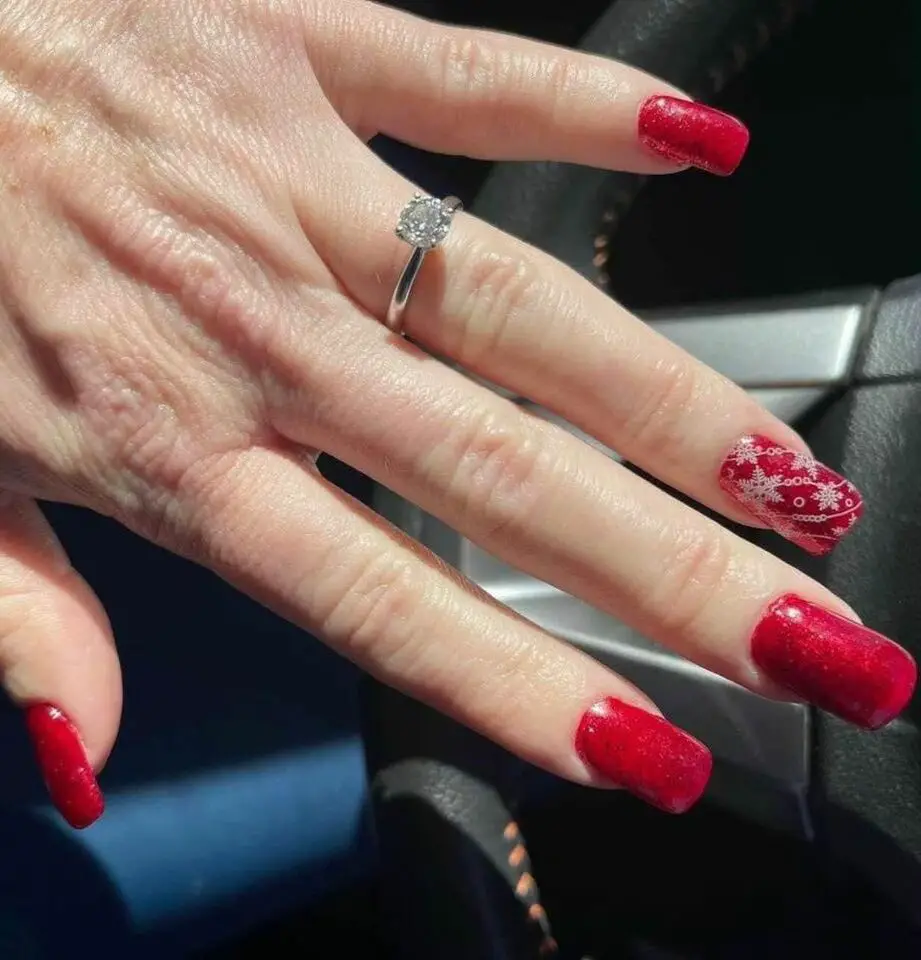
In general, oval and marquise shapes tend to look larger per carat compared to other shapes. Princess and emerald cuts appear smaller since they are square shapes with larger surface areas than rounds.
Comparison of Diamond Shapes and Sizes for 1 Carat Diamonds:
This table visually represents the typical dimensions of 1 carat diamonds in various shapes
| Diamond Shape | Typical Dimensions (mm) |
|---|---|
| Round | 6.5mm |
| Princess | 5.2 x 5.2mm |
| Emerald | 6.3 x 4.1mm |
| Oval | 6.5 x 5.0mm |
| Pear | 7.0 x 5.0mm |
| Cushion | 6.0 x 6.0mm |
| Marquise | 10 x 5mm |
Does Cut Quality Impact the Visual Size?
The cut quality of a diamond dramatically impacts how large it appears. A well-cut 1 carat diamond with excellent proportions can have up to a 10-15% size advantage over a poorly cut 1 carat diamond with fair or poor symmetry.

The primary factors that influence the apparent size are:
- Table size: A smaller table within ideal proportions has more brilliance and spread from the bottom of the diamond.
- Depth %: An ideal depth creates additional internal reflections and makes the diamond sparkle larger.
- Cutlet: A small cutlet means less light leakage out of the bottom of the diamond.
- Pavilion angle: A slightly steeper pavilion angle keeps more light inside the diamond.
- Girdle thickness: A medium to slightly thick girdle prevents a “bow tie” effect on the sides.
- Culet: A pointed culet enhances the brililance through the bottom of the diamond.
When reviewing diamond grading certificates, I always look at the cut grade and actual measurements to find diamonds that maximize spread and brilliance.
Customers are often surprised by how much larger a very well-cut 1 carat diamond can look compared to a poorly cut diamond of the same carat weight.
Does Color or Clarity Impact the Apparent Size?
A diamond’s color and clarity grades do not change its measurements. However, they do affect the eye’s perception of size.
Higher color diamonds in the D-F range allow more light to reflect inside and outside the diamond. This additional sparkle and fire makes the diamond appear larger than a lower color stone.
Similarly, higher clarity diamonds transmit more unobstructed light. Fewer inclusions means there is less distraction from the diamond’s internal and external brilliance.
Lower clarity diamonds like SI1 or SI2 can appear slightly smaller than higher clarity diamonds, even when they have the same cut quality. The inclusions inside the stone can minutely inhibit light performance and spread.
As an expert tip, I often recommend going down slightly in color if it means you can increase the clarity. An eye-clean H color diamond tends to look larger than a lower clarity F color when the cut is the same.
Display Settings Also Impact Size Appearance
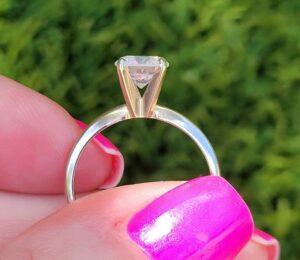
When set in jewelry, the type of setting can alter the visible size of a diamond. Common setting styles like solitaire, halo, three-stone, and pavé mountings create different visual effects.
Solitaire settings make the diamond look the largest, since it stands alone with nothing to compete for attention. The diamond takes up the full crown space.
Three-stone and halo settings reduce the visible spread since they have diamonds on the sides. But they also add sparkle and the appearance of a larger center area, which can balance the size reduction.
Pavé settings create a bed of small diamonds around the center. This can make a 1 carat diamond look smaller, since it blends in with the glittering pavé and is not a standalone focal point.
The setting you choose is an aesthetic decision, but it’s helpful to understand the size effects. As you shop, look at diamonds in different settings to see the visual impact.
Setting Styles and Their Visual Effects:
| Setting Style | Visual Effect on Diamond Size |
|---|---|
| Solitaire | Largest |
| Three-Stone | Reduced Spread, More Sparkle |
| Halo | Reduced Spread, Enhanced Center |
| Pavé | Smaller Appearance |
How Much Does a 1 Carat Diamond Cost?
The price of a 1 carat diamond depends heavily on the 4Cs, along with the brand and supply conditions. Here are some typical current price ranges:
Clarity Price Range for 1 Carat Round Diamond:
- Flawless or Internally Flawless: $15,000 – $60,000+
- VVS1 or VVS2: $8,000 – $20,000
- VS1 or VS2: $5,000 – $15,000
- SI1 or SI2: $3,000 – $10,000
Color Price Range for 1 Carat Round Diamond:
- D colorless: $12,000 – $50,000+
- E colorless: $8,000 – $25,000
- F colorless: $7,000 – $18,000
- G near colorless: $5,000 – $14,000
- H near colorless: $3,500 – $12,000
As you can see, the cost variation is huge. A D flawless diamond will be astronomically more expensive than an I SI2 diamond, even though they are both 1 carat. My advice is to consider going down slightly in color and clarity to increase your budget for cut and carat weight.
I also recommend looking at laboratory grown diamonds, which are chemically and visually identical to mined diamonds.
An excellent quality 1 carat lab diamond can cost 40-50% less than a mined diamond. For customers who prioritize size over natural origin, they are a great option.
Guidelines for Choosing a 1 Carat Diamond
If you decide that 1 carat is the perfect size for your budget and style, here are my top tips for choosing a diamond:
- Set a clear budget and determine if you’re open to lab diamonds.
- Select your ideal shape and setting type.
- Focus more on cut quality than getting exactly 1 carat. A 0.9 carat ideal cut can appear larger!
- Pay attention to measurements instead of just the carat weight.
- Consider fluorescence if you’re between color grades.
- Review the diamond certificate data yourself or have an expert assist you.
- See diamonds in person before you buy, especially if ordering online.
Common 1 Carat Diamond Questions
Over the years in the jewelry industry, I’ve been asked all kinds of questions about 1 carat diamonds. Here are some of the most common inquiries:
Do all 1 carat diamonds look the same size?
Definitely not! As we covered, the cut, shape, clarity, and setting impact the size. Well-cut oval or marquise diamonds tend to look much larger.
Does a 1-carat diamond have to weigh exactly 1 carat?
No, the weight can vary slightly above or below 1 carat. Diamond weight is precise, so don’t just rely on the rounded “1 ct” description from a jeweler.
Is a 1 ct diamond big?
It depends. A 1 ct diamond is large enough to make a significant visual impact. However, if you’re used to wearing larger stones or have a bold style, you may desire 2 carats or larger.
Is it better to get a 1 ct diamond or a smaller diamond with better cut?
This depends on your priorities. With today’s pricing, you may have to go down in cut quality to get 1 full carat. My advice is if you can find a 0.9 carat triple excellent cut, it could potentially look larger and more brilliant than a 1 ct good cut.
What shape makes a 1 ct diamond look biggest?
Oval and marquise shapes tend to face up larger per carat compared to square or rectangular shapes like emerald and princess cuts.
What does a 1 ct diamond typically cost?
Total cost depends heavily on the other 4Cs. Well-cut eye clean 1 ct diamonds range from around $5,000 to over $25,000 at retail.
The Takeaway on 1 Ct Diamond Size
A one carat diamond is an ideal weight that strikes a balance between maximizing carat size while maintaining affordability. With a 1 ct diamond, you get an eye-catching, visually substantial stone for the price. When set in a solitaire mounting, a 1 ct diamond looks beautiful and proportional on most finger sizes.
Despite the standardized 1 ct weight, the actual visual size of a 1 ct diamond can range significantly based on the 4Cs as well as the setting style. As you search for the perfect 1 ct diamond, finding an excellent cut stone with proportions that maximize the spread and brilliance is the ultimate goal. An exquisitely crafted 1 ct diamond will be eye-catching and full of fire that overshadows slightly heavier diamonds with lesser quality.
